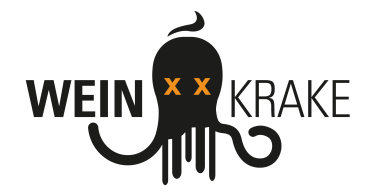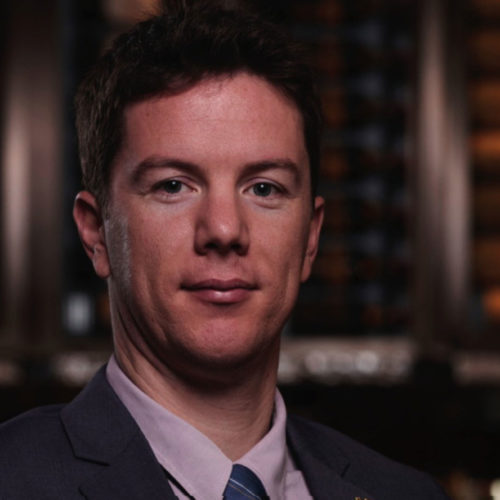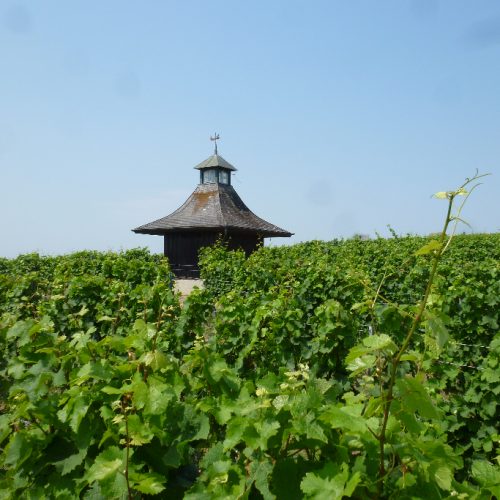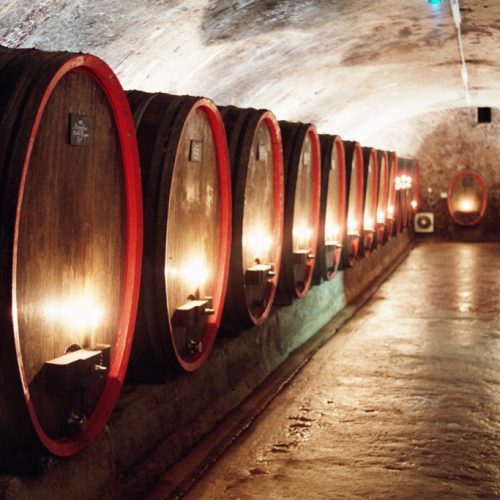The Wines
2014 VOLS SAAR Riesling off-dry
Small but mighty. With 10 % alcohol by volume it strikes up fresh and delicate. The marked fruit component is borne by an animating sourness. However the residual sweetness keeps the sourness at bay; there therefore arises a racy and well-balanced synergy. Here we have a lot of fun in one bottle.
2014 Ayler Kupp Riesling Kabinett
A Saar-storybook Kabinett. Delicate with an incredible complexity. As a preliminary point the scent of lime, peach and a little bit of apple emerge in one’s nose. Arriving at the palate this Kabinett gains pace. Here the essence of the whine starts to act which creates an exceptional intricacy. The sourness is subtle, staying more on the sideline, and will shape a highly interesting and extremely sophisticated wine as the ripening process proceeds.
2014 Wiltinger Kupp Riesling Kabinett
One Kabinett is not like another. The Wiltinger Kupp Riesling hovers somewhere between the category of classical Kabinett and off-dry wine. At first there is a scent of apple, peach and herbs which proceeds on the palate. Yet there is much more to it. Herbs and minerals dominate together with a slight breeze of fruit which repeatedly creates freshness and an animating flow. This Kabinett is very close and then again far away. An amazing taste adventure. This wine brings plenty of joy today and probably even more in the near future.
2014 VOLS I Riesling Spätlese
Last but definitely not least. The VOLS I is entitled to be the number one. The late harvest wine is way out in front. It is shaped by slightly more mellow stylistics. Olfactorily, quince and peach aromas can be identified. Entering the mouth it appears more pungent. The sourness provides structure. Fruit components hardly emerge. Not willing to seperate from its subtle elegance the wine simultaneously flexes its muscles a little more.
The Interview
Wine expert, cellarman, vineyard manager. All professions around wine. Did you lack the prospect to work as a vintner or why have you decided on it after some time?
I am originally from a small establishment in Wiltingen upon Saar. Our family has been active in winegrowing for many years. After my Abitur or during my school days I worked for great vineyards when I was on summerbreak. A cellarman apprenticeship and a study ensued. After a few years I returned home willing to be self-employed. In 2010 we acquired a vineyard in Ayl. The smaller vineyard VOLS has absorbed the greater vineyard Althenhofen. Together we own about seven hectare in lots of land parcels. So I was clear in my mind that the occupation of a vintner was a logical conclusion in my history and it has developped positive to the present.
Your philosophy is to place special emphasis on the crystal clear style of the Saar wine. Could you please explain the meaning behind that?
As children we already got to drink wines. Especially on festive days we had our own glasses. I enjoy remembering the taste of the 1950s and 60s vintages. They were very delicate, elegant and vivid wines. With a well integrated sourness and a little bit of natural residual sweetness. The ease of those wines fascinated me even then. Unlike many other regions, whose wines contain more alcohol, the Saar was slim and racy. Even more slim and racy than the wines from the Moselle. With good education and several years of experience you know where the adjusting screws are which you have to turn in order to work out this ease, this elegance. For example we have no skin contact to release potassium from the grape skin which makes the wine a little more broad and rounded. We want to bring a very piquant, vivid and vibrating sourness into our wines. A style I know and love from the past.
Are you alone with this Saar style?
There are a few more vintners who create similar wines. But there is the other side too. One example. We were on holidays in the region Vinho Verde in Portugal. There the Portuguese vintner had a German wine from the Saar which was very much to his liking. However he said that this wine just as well could have grown in Palatinate. This comment was a real kick in the teeth. Admittedly it was nice to hear that Saar wines find approval elsewhere but that one could not figure out the style at first glance was shocking. It bothered me for quite a while. What was drunk in the past. What do the others do. These thoughts have shaped me and my wine making philosophy.
Many claim your wines are “deranging”, full of character. People chafe at them. How does that come about and what does that mean, respectively?
We work relatively close to the eco-winegrowing guidelines. Nevertheless we are not certified. Only whole grape pressing is practised in the cellar. The grapes go directly into the winepress. There is no skin contact. Nothing is sugarcoated and so forth. All of us are qualified and we know what we could do to finish wines very quickly. Lots of vintners are already bottling at that time. But one must intervene with fliters, additives etc. We don’t want that. Our wines take time. Over time the wines become rounder. A little plumper. While aging rough edges are polished. There are Rieslings which taste like lychee, mango, maracuya. Naturally Riesling does not taste like that. Our wines are exactly how they grew. And we want to work out this authenticity optimally.
Not so long ago your colleague Egon Müller set a new record (sale price) at the VDP auction. This shows that Saar Rieslings can be worth very much. Why do you think that this is the case? What do the consumers want?
It was a Trockenbeerenauslese. I am not sure but it could be that I have tried it before (laughs). It is not only Egon Müller. The Scharzhofberger is certainly extraordinary. With Braunfels we are very close to that region, only 100 meter beeline. The slate is a bit more weathered. As I said, these wines are extraordinary. That is out of the question. They are wines which one spots blindfold at a tasting. Distinct. Authentic. The region is so different from for example the Central Moselle. There is no tourism where everyone has their garage open and gets the “bystanders” drunk. The stylistics speak for itself. A litte more delicate, rassy with a bit more sourness. More precise with a shade more pressure in the mouth. It is a small cultivation area with only 750 hectares. And yet it has an outright independence. One could almost create a distinct wine-growing area out of it (laughs).
What market is the most efficient at the moment?
America is the strongest market. There we have introduced a new produkt this year.”United Slates” We wanted to make use of this play on words. Our idea was to bring different slate types into one curve since we actually have four different slate variations in our establishment: red slate, grey/greem, deep grey and soils with high quartzite proportion. It is especially well received in America. Japan and China as well. South Korea will be the next market since there is an increasing demand for these wines.
What about the special quality wines?
Kabinett is important. Spätlese works well, too.The classical stylistics.
On the label it says VOLS named after one of your most famous locations which was rated as high as the world-famous Scharzhofberg in 1868. However the emblem is situated unusually vertical on the bottle instead of horizontal. Symbol of a rather maverick mindset?
We developed the label together with an advertising agency. It is supposed to symbolise the characteristics of the wines. Just the way they are. Very slim, very elegant, straightforward. Lucid and structured. There is a line which only tells you “2014 Saarriesling off-dry”. That is it. With the particular levels: Gutswein, local wine, vintage wine. The more upmarket the wine, the more valuable the label with gold foil. Very straight, very narrowed. Just like the wines standing behind it. In my opinion the quality wine classification is beneficial. It is typical for the VDP. I have run a VDP vineyard for quite some time. It becomes second nature. The customers understand that very well. And by the way, we will never become a VDP vineyard. There reigns a different policy.
Which wine do you drink currently and at which moments?
Presently I drink a 2012 Wiltinger Riesling dry. It was on the yeast with batonnage for one year. The others are still too young. Too fresh. I like savouring with customers. If the weather is nice, we will go into the vineyard. Then we savour the wine right where it grew. When we harvest the vineyard we drink the wine of the previous year with the harvest hands. That is always nice. That way the people know what they have done the last year (laughs.) I enjoy drinking a glass once calm has returned. No telephone, no stress. Then we are eager to try out new things. Colleagues like to try each others wines although vintners have to be careful and cannot drink any wine for one, two, three days a week. That is very important.
There are extentions of the company building going on in Ayl. That looks like expansion, does it not?
We simply need more space. We have a beautiful wine barn where we conduct presentations. A machine is also planned. All in all we create space for the coming years. Nevertheless we stay at an extent which is still manageable.
You have three women at home (wife and 2 daughters). All of them work in the viticulture. Is it more fun to work with women?
Definitely! (laughs) Without a strong wife in the background you do not even have to start. She backs me up. Both of our children are in the schools respectively studying currently. Not really tangible. We look forward to having them in the establishment.
Principally, your wines are not put on the market before April/May. What awaits us of the 2015 vintage?
The 2015 vintage is momentarily fermenting. All grapes are hand-picked and I only employ people from our region. That way I can directly set my wits to them. I see every bucket which I empty out myself most of the time. Simply concerning the grape harvest, which is much more important than the things happening in the cellar, I pay close attention that we only have perfectly sorted grapes. We picked Beerenauslese and Trockenbeerenauslese. Those two were perfectly possible to pick this year. The Spätlesen from Wiltinger Kupp, Braunfels, Schlangengraben and Ayler Kupp turned out very well. Schonfels was tremendous this year. The grapes have perfect aroma this year. There was nothing to pick out besides Beerenauslese or Trockenbeerenauslese. We could use everything. It will be a great Saar vintage.
Besides wine what else is part of your life?
Travelling and family. I used to play music but I do not find the time to do so anymore. Maybe we will visit France once again next year. Atlantic coast and sea food. Delicious.
What instrument?
Trombone.













